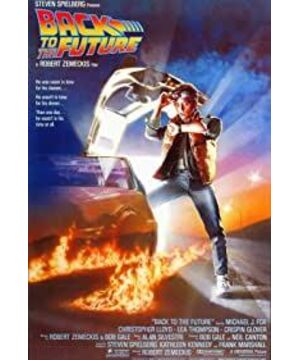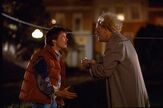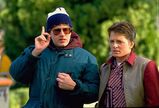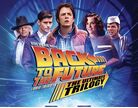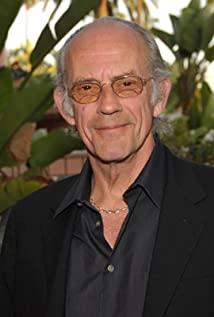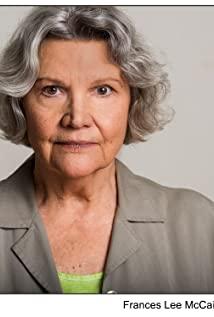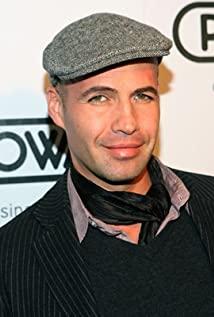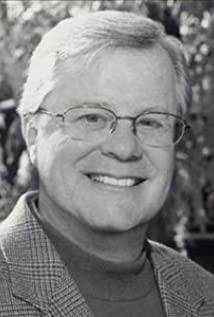Science fiction movies before 1986 were about space exploration, about alien creatures, about future world robots (artificial humans), about creating magical kingdoms in the vast universe, and about time travel, the movie " "Back to the Future" belongs to the last. Compared with sci-fi movies such as "2001: A Space Odyssey", "Star Wars", "Alien", "Blade Runner", "ET Aliens" and "Terminator", the "Back to the Future" released in 1985 is not the hardest theory. , Creative and the latest, not the most impactful of the picture, nor the most forward-thinking, the deepest connotation, but it can perfectly integrate science fiction elements with real life and history, which is relaxed and humorous, without losing touch, and expressing It is the only one that has enriched views.
Although the act of traversal runs through the entire series of "Back to the Future" and the story is connected by traversal, in fact, the exploration of the field of time and space travel in the movie is only a mere taste. Director Robert Zemeckis and screenwriter Bob Gale The attitude towards this kind of behavior through time and space is very cautious.
Every time Marty crosses into the past, it is accidental or compelling.
In the first part of "Back to the Future", Marty accidentally drove the space-time machine through the 1950s to escape his life. He met his parents who were still high school students there. By accident, Marty's mother Lorraine fell in love with him. Marty did a lot of things in order not to affect the normal love of his parents and not to disturb the normal time. But he did not expect this. Things have seriously affected the future, and may even make him disappear into the world. If the time set before the doctor’s accident was not 1955 and Marty had crossed into the era when the doctor did not exist, if George McFly was still cowardly and unconfident and Lorraine never liked him, Marty might “go away forever”. The danger of crossing is obvious.
"Back to the Future 2" took on the end of the first part. The doctor brought Marty and his girlfriend Jennifer to 2015. The purpose was to prevent little Marty from going to jail, but he didn't expect that the opponent Biff took the opportunity to take advantage of the time in the process. The machine went back in time and changed the normal course of time. When Marty and the doctor returned to 1985, they found that Marty's father was killed and his mother remarried to Biff. The doctor was convicted of being caught by a mental illness. Biff became a wealthy and powerful, and the entire valley town was in chaos. In order to correct history, Marty and the doctor had to travel to 1955. After a lot of effort, time went back on track, but in the end there was another accident-the time machine was struck by lightning, the doctor arrived in 1885, and Marty was left in 1955. Looking back, the reason for the subsequent troubles is because the doctor foresaw the events of 2015 and tried to prevent bad things from happening. The reason why Biff gave the sports yearbook to himself in 1955 was equivalent to foreseeing the future and forcibly making some changes in order to make good things happen. This series of things shows: 1 Don't try to predict the future, 2 crossing itself is risky.
In Back to the Future 3, Marty could have smoothly returned to 1985 with the help of the doctor in 1955, but when Marty discovered that the doctor might have died in 1885, he decided to save the doctor in 1885 and take him back with him. In 1985. Marty almost lost his life there, not only didn't bring the doctor back, but changed the doctor's life trajectory. These things have once again emphasized that time and space travel has great unknowns, and usually, unknown means danger.
The director and screenwriter have implemented the concept of taking a serious and cautious attitude towards science into the doctor. Through many personal experiences, the doctor's attitude towards time travel has changed and he has more in-depth thinking. At first, the doctor was excited and excited about time travel. For example, at the beginning of "Back to the Future", the first stop of his planned time travel was 25 years later. He wanted to see how human beings will progress in the future, "Back to the Future". At the end of "Future", the doctor plans to go 30 years later. By the second part, the doctor had realized the danger of time travel and decided to destroy the time machine. In the third part, the doctor did not want to voluntarily stay in 1885 because he repeatedly broke the continuity of time and space. He also refused to bring his beloved back to 1985. He even expressed the painful feeling of time travel.
Each of the "Back to the Future" trilogy has encountered various difficulties in the process of trying to return to 1985. These difficulties come from the space-time machine itself, but also from the environment, people, and events in the "new" era. These obstacles on the way enrich the twists and stimuli of the story. They form the structure of the film and also reflect the director and screenwriter’s attitude that time travel is inherently risky.
A good director or screenwriter, the thinking they present in the story must not be narrow. Take the "Back to the Future" series as an example. Although the behavior of traveling through time and space and predicting the future has its bad and even terrible effects, it may also bring some unexpected gains. For example, in the first part, because Marty left the messenger doctor in advance to avoid being shot by terrorists, for example, the doctor encountered his beloved love after accidentally arriving in 1885, and for example, Marty changed his during the trip to the west. A major character defect, of course, for the Marty family, the biggest gain is Marty's father's heroic punch that caused a turning point in life.
Traveling through time and space brings all kinds of unexpected gains or evil results, but also brings out the subtle and magical emotional connections that exist between people.
Regardless of people from different time and space or people from the same time and space, no matter what the era is, there is not much difference in the establishment of relationships between people, although people of different eras may be separated when they get along at first. , Obstacles, but from unfamiliar to familiar, further thought and emotional communication are needed. The interesting thing about Traversing is that it can put people who were not originally in the same era or generation in the same context: like Marty, he can temporarily be free from the constraints of blood and generation, in a way that is equal to people of the same age. To meet with our parents and great-great-grandparents, the magical thing is that we finally seem to have seen something similar to friendship happen between them; like a doctor, we met a female teacher in the western era who also loved science and science fiction, and was in love. Sparks cannot be suppressed.
And people who have gone through many journeys together, such as Marty and Doctor, this extraordinary process has also made the weight of the friendship between the two heavy. In the first part, although the doctor of 1955 and Marty who had traveled through had been together for less than a week, when he was about to send Marty away, the doctor thought that he would have to wait 30 years before he could meet Marty again.
At the end of the third part, Marty, who returned smoothly to 1985, saw only half of his photo with the doctor, and his sorrow and regret could not be concealed. When the doctor suddenly appeared in the new space-time machine and took out a picture of the two intact in front of the big clock in 1885, there seemed to be tears in Marty's eyes. That group photo is a testimony of the extraordinary journey they have experienced together. They are the witnesses of the start of the big clock, and the big clock is also a witness of their journey through time and space.
The Bell Tower is a special existence in the movie. In both the first and second parts, people from the Cultural Relics Association called on people to donate to the Bell Tower to preserve its plot. If you haven't watched the third part, the appearance of these people seems a bit annoying, and the clock that feels broken is really worthless. However, after following the protagonist to 1885 and witnessing the launching ceremony of the big clock, especially watching the picture of Marty and the doctor taking a photo in front of the big clock, I finally realized that the clock tower is more than just a series of plots. The bell tower carries the history and culture of the valley town. The valley town has been changing for 130 years, but the bell tower has been standing there steadily. Time does not stop for a moment. The world is constantly changing. Objects will get old and animals will get old. It seems that everything will disappear and everything will be eliminated in the end. The existence of the clock tower is a symbol of invariability and a proof of memory. The clock tower should be preserved not only because of its historical and cultural significance, but also because we need something unchanged, such as deep feelings. We hope that it will not diminish with the passage of time and are willing to guard it. The clock tower is It is a materialized symbol of something that people want to protect.
Through many time and space travels, the film also brings out a firm point of view: the future is uncertain, the future is created by oneself, and the next inconspicuous behavior may affect the future development. I believe that when many people first saw the beginning of "Back to the Future", just like Marty, they would have questions about why his family was like this and why his parents were mixed up with the present. But when Marty crossed over to 30 years ago, he had real problems with his parents. After getting along with each other, it suddenly became clear to the original doubts-what the past (1955) determines what the present (1985) is. When at the end Marty returned to 1985 and found that everything had changed dramatically, Marty was pleasantly surprised but also confirmed a truth: what now (1955) affects the future (1985). The 2015 Marty that appeared in the second part was a car accident due to an impulse when he was young, and he had to give up music, and he was still depressed. He still couldn't stand others calling himself a coward and was expelled for it. But after passing through the west and returning to Marty in 1985, he changed the character of being arrogant when others said he was a coward, and avoided the car accident. The paper with the word expelled from 2015 also changed. Became blank.
Although the ultimate goal of each part of "Back to the Future" is to return to the so-called future, and the doctor’s initial vision is to travel to the future, looking at the trilogy, you will find that its true focus is based on history and In other words, it is the present (it only appeared for more than 30 minutes in 2015). The three important time points in the "Back to the Future" trilogy-1885, 1955, and 1985, happen to correspond to a relatively special period in American history. It is said that it happened to be because these time settings were not deliberately different from each other. American historical associations. "Back to the Future" was filmed in the 1980s. Choosing to travel to the 1950s just wanted the protagonist to return to the era when his parents went to high school. The story of "Back to the Future 3" took place in the western United States in 1885, only because 1885 happened to be 100 years after the first movie was released. Although it was a coincidence that it collided with a special historical stage, the director and screenwriter still did their homework on history.
The Civil War promoted the rapid development of the US economy in the second half of the 19th century, catching up with and gradually surpassing capitalist countries such as Britain and France. One of the achievements that must be mentioned is the development of the western region. Whether it was out of ambition to broaden the territory, or to satisfy basic survival needs, or out of the pursuit of a better life, a large number of Americans flocked to the west, bringing about earth-shaking changes to the west. The development of land, the production of crops, the development of minerals, and the construction of roads and railways. At that time, the West was a symbol of wealth, opportunity, freedom, romance, and unlimited possibilities for Americans. With the passage of time and the influence of many literary works and film and television works, when people think about the West, the first thing people think of is probably the image of riding horses and whips on the vast land. "Back to the Future 3", which set the time to travel in 1885, satisfies many people (including the cast and crew)’s fantasy of the West. It is not just a distant era, but also another world, even if it’s impossible. It's traveled to the past, but it was also an eye addiction.
It was 10 years after the end of World War II in 1955 and the end of the Korean War for 2 years. At this time, the United States had occupied a leading position in the world in terms of politics and economy. The people’s living environment was relatively stable, and their income and living standards were relatively stable. Great improvement. Saying goodbye to the previous wars, there is still a long way to go from the following wars. For the American people, this is a rare and peaceful time in which the society is relatively stable and there are not too many complicated problems. With the end of the war, the soldiers returned home from the battlefield, returned to their normal lives, sought jobs, got married and had children. In the 18 years from 1946 to 1964, nearly 78 million babies were born in the United States. In "Back to the Future", Marty's mother Lorraine and his family only appeared in just a few minutes, reflecting the postwar baby boom phenomenon. There were 5 children in Lorraine’s family, including her. She was the eldest, and the remaining 4 were very different from her age. As more and more families are formed, the population of the society soars, a large number of suburban land is developed into residential areas, and tens of thousands of Americans move from urban areas to newly built large houses in the suburbs to start their new lives. In addition to good housing, when economic conditions permit, people also pursue higher material comforts, such as buying new cars and new televisions.
However, from the 1960s until the 1970s, the word "anning" basically has no relationship with the United States. Although the flames of the Vietnam War did not spread to the United States, gun smoke and artillery fire spread throughout the American society. The anti-war movement began with the war, with great momentum and vigor. Stimulated by the war, the US economy was still on the rise in the 1960s, but the increasing material standard of living could not fill the emptiness of people's spirit. Many people began to rethink, examine themselves, and examine society. Various movements began to emerge, such as the civil rights movement, women's movement, environmental protection movement, counter-cultural movement and so on. By 1973, when the United States withdrew from the Vietnam War, various movements basically ceased. The consumption of more than ten years of war caused the United States to experience frequent economic crises and stagflation in the 1970s, and its culture changed from utopian fantasies to conservative restraint. The 70s, which was in great contrast to the restless and swelling 60s, were tired and sluggish. This state even continued into the early 1980s. It wasn't until 1983 that the United States emerged from the crisis. Since then, the U.S. economy has returned to life, with strong growth and prosperity. The man who led the United States out of the gloom and reversed the negative situation was the 40th President of the United States, Reagan. In "Back to the Future", Marty has just traveled to 1955, and the Valley Town Theater is showing a movie in which Reagan is participating, so when Marty tells Dr. Reagan is the future President of the United States, the Dr. will be so surprised. The script of "Back to the Future" was completed in 1981, just as Reagan had just come to power. The doctor's reaction was actually the epitome of the attitude of many Americans at that time. People were worried about the future of the United States. I don't know that this actor was born at 70 years old. Of men can bring hope to the United States.
Director Robert Zemeckis said in the "Back to the Future" series of interviews: He likes historical films and does not want to shoot future themes. One of the reasons is that the film itself is good at expressing history; the second reason is that time can test what happened in the past. . Although the "Back to the Future" series is included in the ranks of sci-fi movies, it is possible for the director that sci-fi is only a special way to help people look back at history, and while looking back at history, they can also take a look at the present by the way and be bold in the future. Make a guess.
There are many tributes to the classics in the three "Back to the Future" movies . For example, in the first part, Marty imitated Darth Vader of Star Wars and Captain Spock in Star Trek when he scared his father in the middle of the night; At the high school prom, Marty, who likes rock, sang the song "Johnny B Goode" created by the rock star in 1958; in the third part, Marty gave himself the name Clint Eastwood and the final method of resurrection of the body armor are all to the American movie star Clint Eastwood pays tribute to "Red Dead Redemption" starring him.
The true restoration and reinterpretation of history, as well as the tribute to the classics, succeeded in making the "Back to the Future" series give the audience a sense of intimacy and resonance that spans time . This feeling is fully utilized in the first part. The screenwriter Bob Gale once said in an interview that the idea of "Back to the Future" was actually generated when he looked through his father's high school yearbook-he found that his father was a representative of graduates that year, but he couldn't remember his high school graduation. Who is the student representative, and then he imagined that if "I go to high school with my father, will we become friends"? Based on this idea, there is a story of Marty, a high school student in the 1980s, who crossed his parents 30 years ago when they were in high school, and had an intersection with them. It may be curiosity and caring about what the parents were like when they were in school, or curious about the collision between the children when their parents were young, and the stories starting from life and family itself shorten the distance between the movie and the audience.
In addition to the intimacy and resonance, the one-stop connection of the "Back to the Future" trilogy creates an excellent sense of smoothness to watch . On the whole, the beginning of each one succeeds the ending of the previous one, and it is not a problem to treat these three as one big movie. In addition, I have to insert a paragraph. Actually, "Back to the Future" originally did not intend to make a sequel, but because the first film was very popular, and the end of the film was written to be unfinished, so some filmmakers and investors came to the door to ask for a sequel, so there was The second and the third part. The screenwriter Bob Gale explained in the behind-the-scenes interview of the "Back to the Future" series that if they had known for a sequel, they would not let Jennifer in the car, because the audience would see in the second part they didn’t know how to get Jennifer. So I can only faint her first. What's amazing is that the audience was completely unaware of the deliberate treatment in the second part or the incoherence caused by the cohesion of the plot. In terms of details, it has also made a foreshadowing and echoing in the back . Here are just a few examples: In the first part, the news broadcast on TV when Marty came to the doctor’s house early in the morning was a preview of what happened later, and the time machine used it. Fuel plutonium is the nuclear material stolen by terrorists mentioned in the news;
Marty and his girlfriend met in front of the clock tower and the people from the Association for the Protection of Cultural Heritage asked them to donate to the clock tower to be demolished. The lady mentioned that the clock tower was struck by lightning 30 years ago and the clock stopped. She gave them a leaflet before leaving. The words of the lady and the information in the leaflet provided the doctor in 1955 with the basic conditions for the spatio-temporal machine to accelerate to the speed of crossing;
In the second part, when the doctor was preparing to return from 2015 to 1985, he mentioned that his favorite era was the Old West. The movie Biff watched in the bath was the western movie "Red Dead Redemption", which was broadcast in the body armor at the time. Fragment, and then due to accidentally hitting the time setting button and accidentally being struck by lightning, the doctor traveled to the west in 1955;
The doctor repaired the time machine and accidentally scratched a string of flags while driving it into the air. Later, Marty was able to avoid Biff, who was chasing by the car, relying on this string of flags.
At the end of the third part, when everything came to an end, the director and screenwriter had not forgotten that Jennifer, who was fainted on the porch rocking chair in the first half of the second part, asked Marty who had returned from the west to find her again.
Regardless of the overall and the details, the ability to think logically, but also to be random and flexible, is the embodiment of the director and editor's skills.
The long river of time has been rushing for gold, and the "Back to the Future" series can survive in a flash of light, not by luck, but by strength. The tenth screening room said in its program about it that it could not be called a classic. The screenwriter Bob Gale said in an early interview that the film is still too new, and it is too early to position it as a classic. But now, when asked whether the "Back to the Future" series can be called a classic, my answer is self-evident. Otherwise, what am I talking about?
View more about Back to the Future reviews


